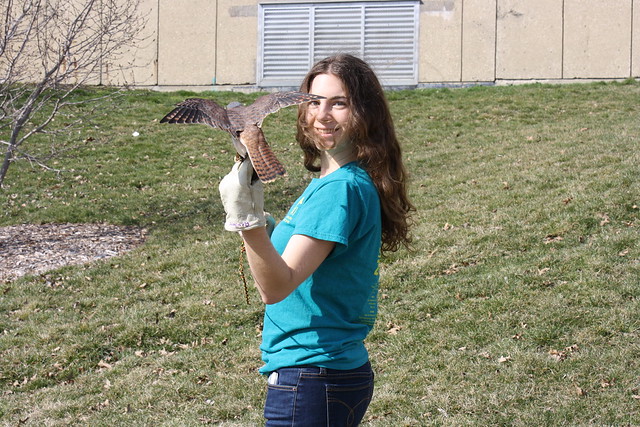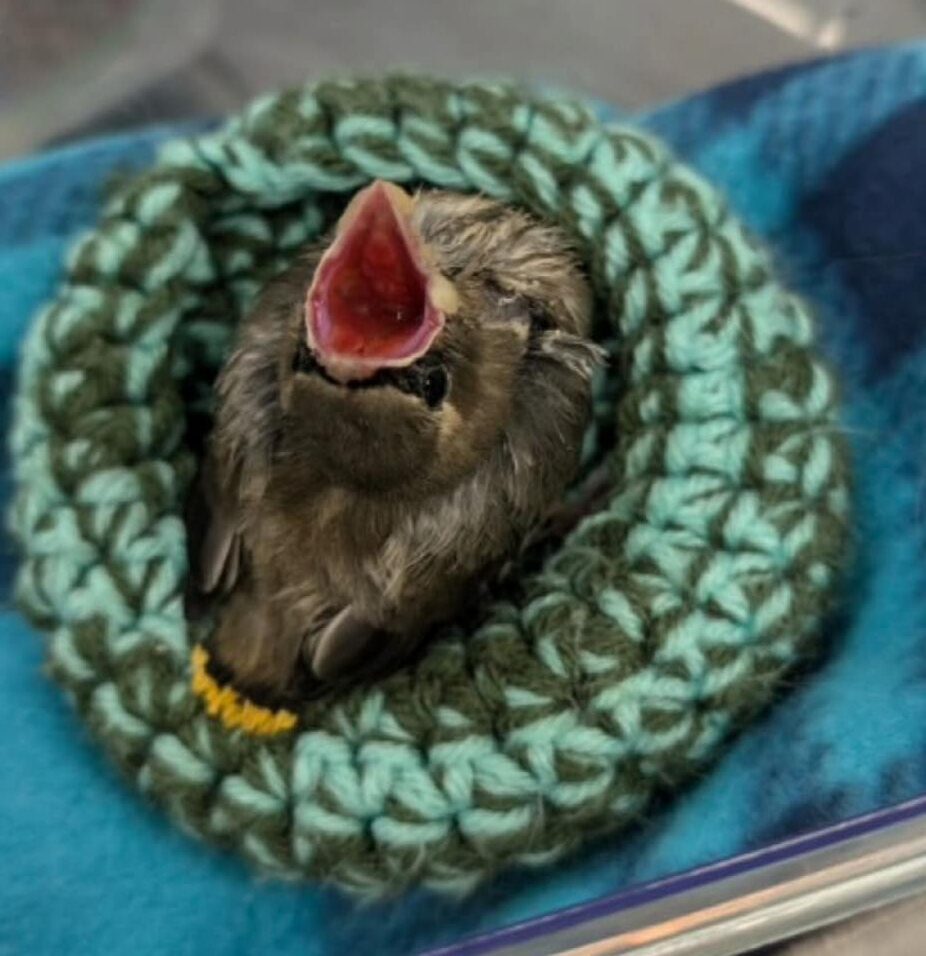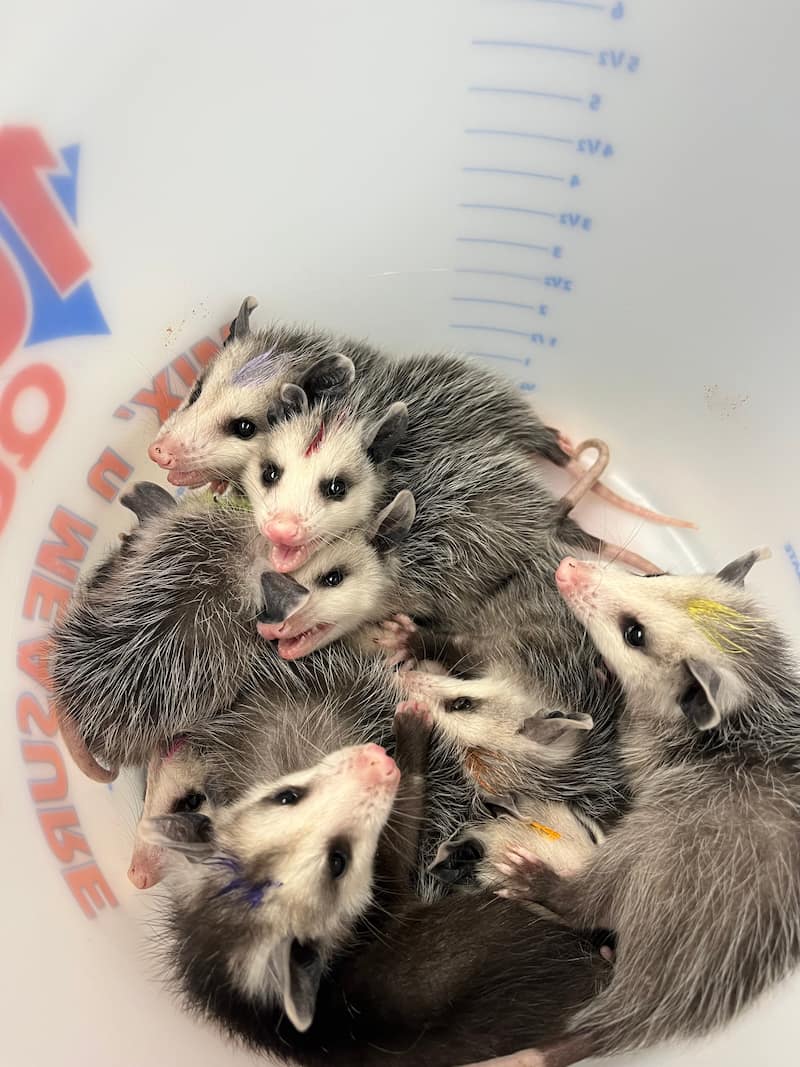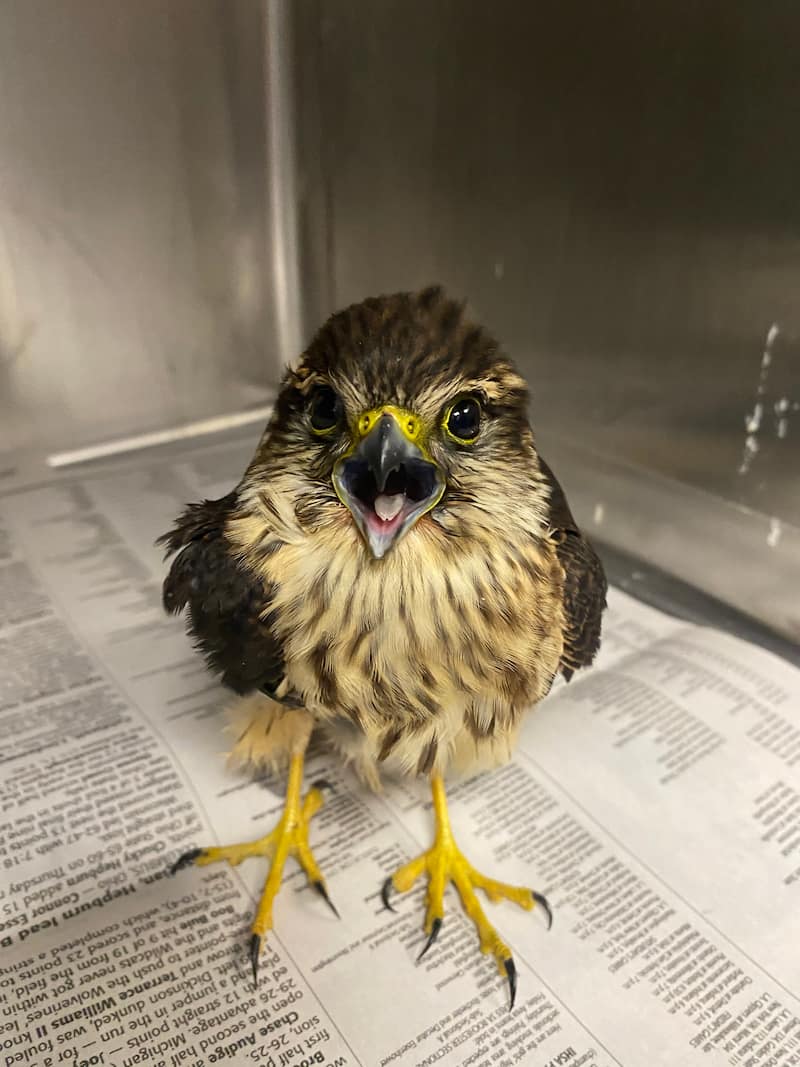by Malke Weil
As resident coordinator, one of my jobs is to train our resident birds to make their interactions with us safe, stress free, and even enjoyable. Our newest member of the resident team is Thistle. She is an American kestrel who came into the clinic in the summer of 2012, with an injury of her left eye. She recovered, but lost the eye, and a one eyed kestrel cannot hunt adequately in the wild. As a patient, she was never afraid of us, she would rush to the front of her cage in anticipation of food, so it was decided that she was a good candidate for the resident program: non-releasable, and not afraid of people.
Once she joined the team, it was time to train her. All our birds are trained to enter a crate, step up on our gloves, and tolerate a basic physical exam, so we can work with them safely and without stress. We train with positive reinforcement, so our first step was finding her reward. She is very food motivated, so that was decided. We had to get her comfortable with taking food from us, so when we rewarded her, she would take it. We started by giving her food and staying nearby while she ate it. Wild animals feel vulnerable when eating, because they are not fully focused on their surroundings. So eating in front of you implies a trust. The next step was putting food closer to us so she would have to come closer to get it, and finally we had her come to our glove and take the food from us directly. She is an eager learner, so this step did not take long at all.
Then we got her comfortable going into her crate, that way, anytime we needed to transport her, she would comfortably comply. We fed her in her crate, and as she went it we said “crate”. Then we came up with a crate command, and every time she follows it,  she gets a treat through the holes in the crate. Next step was to get her comfortable sitting on glove. We held food in our gloves and waited for her to come get it. We would hold onto the food so she would have to stay until it was finished. And sometimes she would stay long after she finished the meal. Then we knew she had reached that comfort level. Once she was coming to sit on the glove with or without food, we started jessing her. Jesses are ropes that go through anklets on their feet, so we can take them for walks without the danger of them flying away and injuring themselves. So to get her comfortable with that, we’d have a treat in the glove, and when she was distracted eating it, we slipped the jesses through her anklets. After a few times, she got used to that and allowed us to do it without the food distraction.
she gets a treat through the holes in the crate. Next step was to get her comfortable sitting on glove. We held food in our gloves and waited for her to come get it. We would hold onto the food so she would have to stay until it was finished. And sometimes she would stay long after she finished the meal. Then we knew she had reached that comfort level. Once she was coming to sit on the glove with or without food, we started jessing her. Jesses are ropes that go through anklets on their feet, so we can take them for walks without the danger of them flying away and injuring themselves. So to get her comfortable with that, we’d have a treat in the glove, and when she was distracted eating it, we slipped the jesses through her anklets. After a few times, she got used to that and allowed us to do it without the food distraction.
Once she had all those behaviors down, she could be a full time part of the resident team. She is a superstar at PR events, for any of you who have seen her, she is cooperative, and enjoys the attention she gets. She loves going on walks, stretching her wings out to feel the wind go through her, and more than anything, she loves one on one attention with our volunteers. She is a smart bird and is always eager to learn. The only time we have problems with her is when we are not working with her often enough. I feel so blessed that I got to be a part of her training team, and it makes me happy that although we could not give her back her old life in the wild, we were able to give her a new one that is full of happiness and enrichment.



